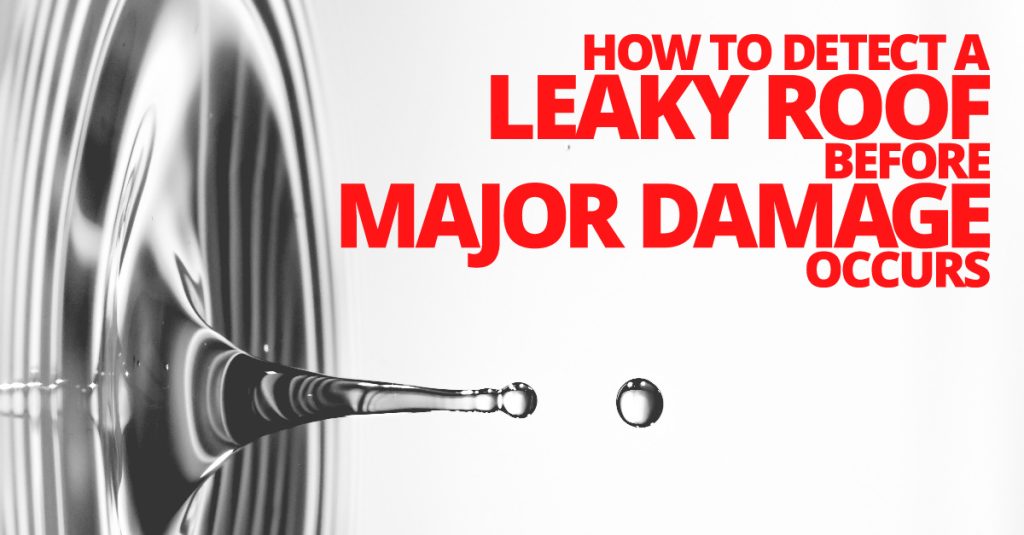The trick to avoiding expensive and extensive roof repair is finding leaks and fixing them before they cause major damage to your home. When left unchecked, a minor roof problem can quickly turn into a major one. However, it isn’t always so easy to find where a leak is located. It isn’t always where the water winds up or causes additional damage. Here are a few tips on how to detect a leaky roof before it causes major damage to your home.
Indoor Signs You Might Have a Leak
You might not see actual water dripping, but you might see unexplained spots or even worse, signs of mold on your ceiling or walls. There might even be a musty or mildewy smell which intensifies when the weather is damp. Areas in your walls or ceiling may seem soft. Your home may feel damper than usual. The problem is by the time you see water entering your home, there could already be damage to your roof’s decking, fascia, home’s insulation, and wallboard.
Tracking Down a Leak Indoors
The first place to start is by going up in your attic with a flashlight to look for obvious signs of a leak. This includes water dripping, water stains, wet insulation, or mold damage. A leak could be as simple as a misplaced or rusted through roofing nail, which can be easily repaired. Another place to look is around any vents in your attic. They could have leaky seals.
Looking for Possible Leaks from Outside
If you’re unable to locate a suspected leak from inside your attic, look for signs of roof damage from the outside. This doesn’t mean climbing up on your roof. Instead, take a quick look from the ground, especially after a bad storm. Look for:
- Missing or damaged shingles
- Exposed flashing or underlayment
- Gutters pulling away from the house
- Boots around vent pipes should be intact
- Branches or limbs on your roof
- Mold or moss growing on your roof
It’s always a good idea to have your roof inspected each year by a professional to determine if there are any areas on your roof which are beginning to fail. If you suspect a leak, don’t delay in getting it repaired. Contact the roofing experts at AIC Roofing and Construction today for a free quote.
Default insurance Lexington Louisville Richmond roof replacement
